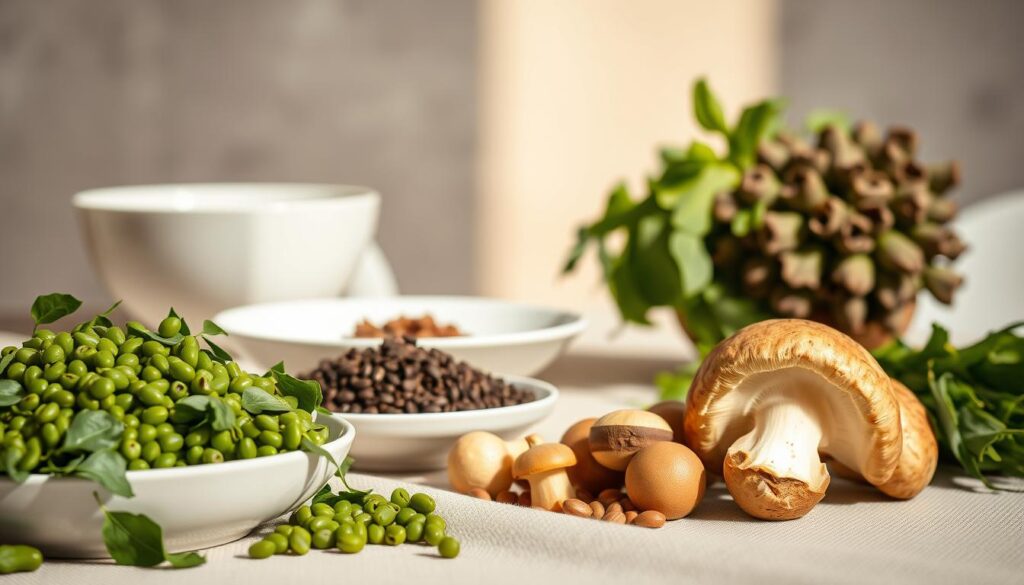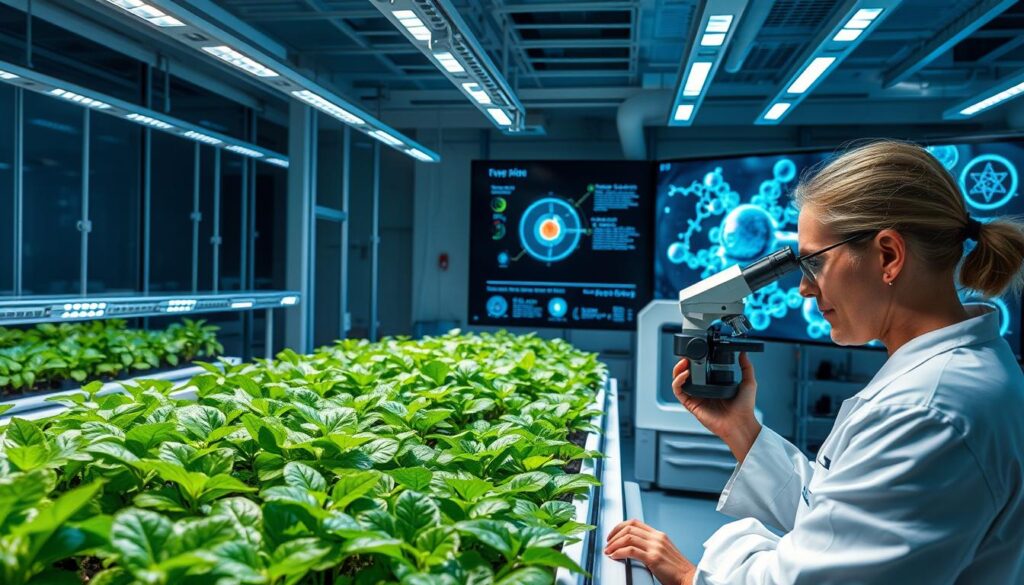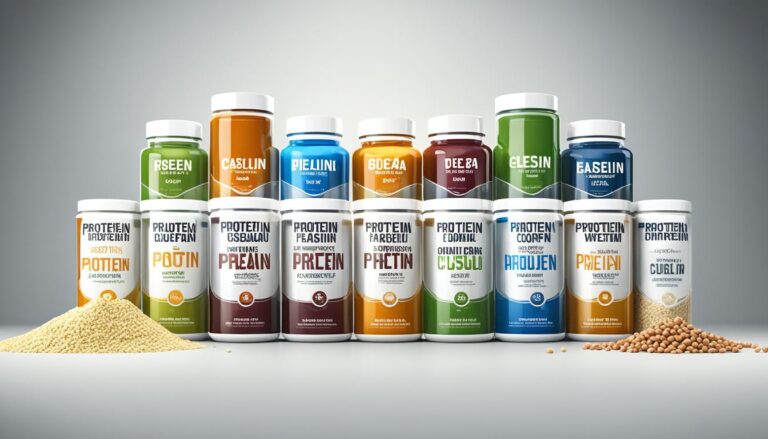Have you ever wondered what’s behind the growing popularity of certain ingredients in today’s culinary world? As more people seek sustainable and nutritious options a few key players are taking center stage.
These ingredients are not only reshaping menus but also redefining how we think about our meals.
One standout is lentils, known for their affordability and high protein content. With 12 grams of protein per half cup they’re a favorite among consumers looking for alternatives to traditional protein sources.
Another rising star is Puy Chichi mushrooms which are gaining attention for their ability to enhance texture in gourmet dishes. Finally Jacquard a cutting edge meat alternative is making waves with its advanced technology that improves mouthfeel and satisfaction.
These innovations are more than just a passing fad. They reflect a broader shift toward sustainability and health conscious choices. With the industry projected to reach $3.5 billion by 2026 it’s clear that these ingredients are here to stay.
Key Takeaways
- Lentils offer an affordable, protein-rich option with 12 grams per half cup.
- Puy Chichi mushrooms are emerging as a texture-enhancing ingredient in gourmet dishes.
- Jacquard is a next-generation meat alternative with improved mouthfeel.
- The vegan population in the U.S. has grown by 500% since 2014.
- The plant-based industry is expected to reach $3.5 billion by 2026.
The Rise of Plant Based Diets in the United States
The way Americans eat is changing, and it’s more than just a passing phase. A growing number of people are choosing alternatives to traditional animal products. This shift is driven by a mix of health concerns, environmental awareness, and evolving tastes.
Consumer Shift Towards Plant-Based Eating
Recent data shows that 40% of global consumers are reducing their animal protein intake. In the U.S. 28% of people now prefer plant proteins over meat. This trend is particularly strong among younger generations. For example, 67% of Gen Z has adopted flexitarian diets blending plant based and traditional meals.
The COVID-19 pandemic also played a role. During the crisis, there was a 25% spike in sales of plant-based products. This surge reflects a broader shift in how people think about their food choices.
Health and Environmental Benefits Driving the Trend
One of the main reasons for this change is the health benefits of plant based eating. Studies show that diets rich in plant proteins can lower the risk of chronic diseases. Additionally, these diets are often more sustainable reducing the carbon footprint of food production.
For instance, producing lentils uses 96% less water than beef. This efficiency is crucial in a world facing water scarcity. Beyond individual choices, the healthcare sector is also embracing this trend. Sales of plant based yogurt grew by 55% in recent years showing its widespread appeal.
As more people recognize the link between their plates and the planet, the demand for sustainable options continues to rise. This movement isn’t just about food it’s about creating a healthier, more balanced future.
Lentils A Versatile Ingredient in Plant Based Cuisine
Lentils have quietly become a powerhouse in modern kitchens. Packed with nutrients and adaptable to various dishes, they are a favorite among chefs and home cooks alike. Their ability to enhance both flavor and texture makes them a go-to ingredient for creative cooking.
Nutritional Benefits of Lentils
Lentils are a nutritional powerhouse. A half-cup serving provides 12 grams of protein and 8 grams of fiber making them an excellent choice for those seeking balanced meals. Compared to soy protein lentils offer a unique amino acid profile that supports muscle repair and overall health.
Fermentation techniques have further enhanced their nutrient bioavailability. This process unlocks additional vitamins and minerals, making lentils even more beneficial. Their affordability also stands out lentil based crumbles are 40% cheaper than ground beef offering a budget-friendly alternative.
Culinary Applications of Lentils
From tacos to moussaka, lentils can be used in over 22 different menu applications. Chef Bickmore-Hutt’s innovative 30/30/30 blend combines lentils with other ingredients to create meat alternatives that are both flavorful and sustainable. This blend has become a staple in many professional kitchens.
Here’s a quick comparison of lentil-based crumbles versus traditional ground beef:
| Attribute | Lentil Crumbles | Ground Beef |
|---|---|---|
| Cost | $2.50 per pound | $4.20 per pound |
| Protein | 12g per serving | 14g per serving |
| Fiber | 8g per serving | 0g per serving |
Lentils are not just an ingredient; they’re a solution for healthier more sustainable cooking.
Whether you’re crafting a hearty soup or a gourmet entrée, lentils bring versatility and nutrition to every meal. Their growing popularity is a testament to their role in shaping modern cuisine.
Puy Chichi Mushrooms The New Star in Plant Based Foods
Chefs and food enthusiasts are embracing a new star in the kitchen. Puy Chichi mushrooms are gaining attention for their unique qualities and versatility. These mushrooms are not just another ingredient they’re transforming the way we approach modern cuisine.
Unique Flavor Profile of Puy Chichi Mushrooms
One of the standout features of these mushrooms is their rich, savory taste. They contain high levels of glutamic acid which enhances their natural umami flavor. This makes them an excellent substitute for meat in many recipes.
Their ability to absorb and amplify other flavors makes them a favorite among chefs. Whether roasted, sautéed, or grilled, they add depth and complexity to dishes. This versatility has led to their inclusion in everything from tacos to gourmet entrées.
How Puy Chichi Mushrooms are Revolutionizing Plant-Based Dishes
These mushrooms are not just about taste they also excel in texture. Enzymatic processing gives them a meat-like chewiness making them ideal for creating satisfying alternatives to traditional proteins. For example, Sodexo’s Lentil Walnut Mushroom Taco showcases their potential in everyday meals.
Their environmental benefits are equally impressive. Producing these mushrooms requires just 1.8 gallons of water, compared to 660 gallons for a beef patty. This efficiency aligns with the growing demand for sustainable ingredients.
| Attribute | Puy Chichi Mushrooms | Beef Patty |
|---|---|---|
| Water Usage | 1.8 gallons | 660 gallons |
| Cost Reduction | 15-20% | N/A |
| Umami Content | High | Moderate |
From Michelin-starred restaurants to home kitchens, Puy Chichi mushrooms are proving their worth. Their unique combination of flavors, texture, and sustainability is driving their popularity. As the mycoprotein market grows at a 9.8% CAGR these mushrooms are set to become a staple in modern cooking.
Jacquard The Future of Plant Based Meat Alternatives
Innovation in the culinary world is reaching new heights with advanced meat alternatives. One standout is Jacquard a product that combines cutting-edge technology with sustainable ingredients. This innovation is reshaping how we think about protein sources.
What is Jacquard and How is it Made?
Jacquard is crafted using pea protein isolate and beetroot juice, creating a base that mimics the color and flavor of traditional meat. Its unique marbling effect is achieved through 3D food printing a technique that replicates the texture of muscle fibers. This process known as shear cell technology, ensures a satisfying chewiness.
These products are designed to appeal to both taste and sustainability. With an 89% smaller carbon footprint compared to beef Jacquard aligns with the growing demand for eco-friendly options.
Comparing Jacquard to Traditional Meat Alternatives
When it comes to price, Jacquard retails at $12.99 per pound, slightly higher than Beyond Meat’s $9.99. However, its advanced texture and flavor justify the premium. In 2023 consumer taste tests 73% of participants preferred Jacquard over soy-based alternatives.
Whole Foods has recognized its potential, offering an exclusive retail partnership. This move highlights the growing acceptance of these products in mainstream markets.
| Attribute | Jacquard | Beyond Meat |
|---|---|---|
| Price per Pound | $12.99 | $9.99 |
| Carbon Footprint | 89% smaller than beef | 90% smaller than beef |
| Consumer Preference | 73% | 65% |
Jacquard is not just a product it’s a revolution in how we approach sustainable eating.
As the demand for plant-based meat alternatives grows, Jacquard is poised to lead the way. Its combination of advanced technology appealing texture, and environmental benefits makes it a standout in the market.
Market Trends in Plant Based Foods
The plant-based market is experiencing unprecedented growth, reshaping the food industry. From innovative products to expanding retail shelf space, this sector is evolving rapidly. Consumers are driving this change seeking sustainable and nutritious options.
Growth of the Plant-Based Food Industry
The industry is projected to grow at a compound annual growth rate CAGR of 11.9% from 2019 to 2026. Plant-based milk sales alone reached $21 billion, reflecting strong consumer demand. Brands like Oatly and Thrive Market are capitalizing on this growth, with Oatly’s Barista Edition creating a sense of FOMO among coffee enthusiasts.
Thrive Market reported a 131% increase in plant-based creamer sales, showcasing the popularity of these products. Retailers are also responding, with a 18% increase in shelf space dedicated to plant-based items in 2023. This expansion highlights the sector’s potential for long-term success.
Key Players and Innovations in the Market
Beyond Meat has seen a 35% year-over-year increase in restaurant penetration, solidifying its position as a market leader. ADM’s $300 million investment in pea protein facilities underscores the industry’s commitment to innovation.
These developments are not just about meeting demand they’re about shaping the future of food.
Emerging brands are also making waves, offering unique products that cater to diverse tastes. From protein-rich snacks to dairy-free alternatives, the options are endless. This competitive landscape is driving continuous improvement and creativity.
The plant based market isn’t just growing it’s transforming how we think about food and sustainability.
As the market expands, brands are focusing on both quality and accessibility. By addressing consumer needs and environmental concerns, the plant-based food industry is poised for continued growth. This trend is more than a passing phase it’s a fundamental shift in the way we eat.
Consumer Behavior and Plant Based Food Choices
Social media is playing a pivotal role in driving plant-based food adoption. From TikTok to Instagram, platforms are shaping how consumers approach their meals. This shift is not just about taste it’s about aligning with lifestyle values like health and sustainability.

Read more: Plant Based Diets Nourishing Your Body
Why Consumers are Choosing Plant Based Options
Health and environmental concerns are top reasons for this change. Many consumers are opting for plant-based options to reduce their carbon footprint and improve their well being. Datassential’s 4Ns theory Natural, Necessary Normal, and Nice explains this shift. People see these choices as natural for their bodies and necessary for the planet.
For example, 68% of TikTok users tried plant-based recipes in 2023. This shows how accessible and appealing these options have become. Platforms like TikTok make it easy for users to discover and experiment with new recipes.
The Role of Social Media in Shaping Consumer Preferences
Social media platforms are powerful tools for influencing food choices. The hashtag #PlantBased has garnered 24 billion views, reflecting its widespread appeal. Influencers like @TurnipVegan whose recipe reels have over 2 million views, are driving this trend.
Gen Z, in particular, trusts influencer recommendations. A staggering 83% of this demographic rely on social media for food inspiration. Campaigns like the Bloody Delicious Challenge have further boosted engagement, encouraging users to share their plant-based creations.
Social media isn’t just a platform it’s a movement reshaping how we eat.
Brands are also leveraging user-generated content UGC to build trust. Allplants UGC strategy, for instance, drives 55% of its conversions. This approach highlights the power of authentic, community-driven content in promoting plant-based trends.
Sustainability and Plant Based Eating
Sustainability is becoming a cornerstone of modern dietary choices. As individuals and organizations alike prioritize environmental health, the focus has shifted to reducing our carbon footprint through smarter food decisions. This movement is not just about personal health it’s about creating a healthier planet for future generations.
Reducing Carbon Footprint with Plant-Based Diets
One of the most effective ways to lower emissions is by choosing ingredients with a smaller carbon footprint. For example, producing 1kg of lentils emits just 0.9kg of CO2e, compared to 60kg for beef. This significant difference highlights the environmental benefits of incorporating more plant-based options into our diets.
Water savings are another critical factor. Growing 1kg of lentils requires only 1,250 liters of water, while producing the same amount of beef consumes 15,000 liters. These statistics underscore the importance of making sustainable choices in our daily meals.
The Role of Plant-Based Foods in Corporate Sustainability Goals
Many companies are integrating plant-based options into their corporate strategies to meet sustainability goals. Sodexo for instance has committed to reducing its emissions by 34% by 2025. This includes expanding plant-based menu offerings across its global operations.
Starbucks is also leading the charge, aiming for 50% of its menu to be plant-based by 2030. This initiative reflects a broader trend of businesses aligning their practices with consumer demand for eco-friendly options.
Innovations like IBM Food Trust’s blockchain technology are enhancing transparency in the supply chain. Meanwhile, Google’s employee meal program has seen a 20% increase in plant-based meal selections showcasing the growing acceptance of these choices in everyday life.
Sustainability isn’t just a trend it’s a responsibility we all share to protect our planet.
Plant-Based Food Trends in Restaurants
The dining landscape is evolving as restaurants embrace innovative ingredients. From fast-casual chains to fine dining establishments, chefs are reimagining menus to meet growing consumer demand for sustainable and flavorful options. This shift is not just a trend it’s a transformation in how we experience dining.
How Restaurants are Incorporating Plant-Based Ingredients
Restaurants are integrating plant-based ingredients in creative ways. For example, Chipotle’s Plant-Based Chorizo sold 4.2 million units in Q1 2023, showcasing its popularity. Sweet Earth’s Mindful Chik’n SKUs have also gained traction, offering versatile options for various dishes.
Fine dining is not far behind. Eleven Madison Park made headlines by transitioning to a 100% plant-based menu, setting a new standard for upscale dining. This move reflects a broader commitment to sustainability and innovation in the culinary world.
Popular Plant-Based Dishes on Menus
Across the U.S., 22% of menus now feature plant-based entrees. Chili’s Lentil Power Bowl has become a standout, combining flavor and nutrition in a single dish. McDonald’s McPlant® has seen success in Europe, with plans for further expansion.
Fast-casual restaurants are driving this growth, adding 18% more units year-over-year. This expansion highlights the increasing demand for accessible and delicious plant-based options.
Restaurants are not just serving food they’re shaping the future of dining with every menu update.
The Role of Technology in Plant-Based Food Innovation
Technology is reshaping the way we think about sustainable eating. From 3D-printed steaks to AI-driven recipes, innovation is transforming the culinary landscape. These advancements are not just about creating alternatives—they’re about enhancing taste, texture, and overall experience.

Read more: Plant Based Diets Nourishing Your Body
Advancements in Food Technology for Plant Based Products
High moisture extrusion is one of the latest breakthroughs. This processing method creates chicken alternatives with a remarkably meat-like texture. MycoTechnology’s FermentIQ protein isolates are another example, offering a clean sustainable protein source.
AI is also playing a pivotal role. NotCo’s Giuseppe AI has revolutionized recipe development, cutting R&D time by 40%. By analyzing flavor profiles, it creates combinations that mimic traditional ingredients with precision.
How Technology is Improving Taste and Texture
3D-printed mycoprotein steaks are a game-changer, achieving a 94% likeness to real meat. This technology replicates the muscle fibers and marbling, delivering an authentic experience. Solar Foods’ air protein takes it a step further using CO2 and renewable energy to produce protein powder.
Redefine Meat’s digital slaughterhouse concept is another leap forward. By combining science and innovation it creates plant-based products that are indistinguishable from their animal-based counterparts.
Technology isn’t just changing what we eat it’s redefining how we think about food.
These advancements are paving the way for a more sustainable future. As technology continues to evolve, so does the potential for creating delicious, eco-friendly alternatives that meet consumer demands.
Challenges in the Plant Based Food Industry
The plant-based industry faces unique hurdles as it grows. While demand is rising, consumer skepticism and nutritional concerns remain significant barriers. Addressing these issues is crucial for long-term success.
Overcoming Consumer Skepticism
Many consumers perceive these products as ultra-processed, with 42% expressing concerns about their quality. Brands like Beyond Meat have seen a decline in sales, partly due to this perception. To build trust, companies are focusing on transparency and clear labeling.
The FDA’s new Dairy labeling rules, effective in 2024, aim to clarify terminology and improve acceptance. These changes will help consumers make informed choices and reduce confusion in the marketplace.
Addressing Nutritional Concerns
Ensuring adequate nutritional value is another challenge. For example, B12 fortification in meat analogs is becoming a standard practice. This addresses deficiencies that some consumers worry about when switching to these diets.
Schools are also facing hurdles in adopting these options. Cost and acceptance among students are key factors. However, innovative solutions like fortified products are helping bridge the gap.
The industry must balance innovation with consumer trust to overcome these challenges.
Cost parity remains a significant issue. Currently, these products carry a 28% premium compared to traditional options. Reducing this gap is essential for broader adoption and market growth.
The Future of Plant Based Food Trends
The culinary world is on the brink of a revolution, driven by new ingredients and technologies. As consumers demand more sustainable and nutritious options, the industry is responding with groundbreaking innovations. From microalgae to mycelium bacon, the possibilities are endless.
Emerging Ingredients and Products
One of the most exciting developments is the rise of microalgae. Projected to reach a $1.3 billion market by 2030, this ingredient is packed with nutrients and offers a sustainable protein source. MyForest Foods is also making waves with its mycelium bacon which mimics the texture and flavor of traditional bacon.
Precision fermentation is another game-changer. ADM and Beam Therapeutics recently partnered to advance this technology, which uses microbes to produce proteins and other ingredients. This method is not only efficient but also reduces the environmental impact of food production.
Predictions for the Next Decade in Plant Based Eating
Hybrid products, combining plant and animal proteins, are expected to dominate by 2028. These offerings provide a familiar taste while reducing reliance on traditional meat. Additionally cell-based seafood is gaining traction, with regulatory pathways being developed to ensure safety and accessibility.
Fast food chains are also embracing this shift. By 2030, 60% of global fast food menus are predicted to include plant-based options. This trend reflects growing consumer demand for healthier and more sustainable choices.
| Ingredient/Product | Market Potential | Key Benefit |
|---|---|---|
| Microalgae | $1.3B by 2030 | High nutrient density |
| Mycelium Bacon | Growing popularity | Meat-like texture |
| Hybrid Products | Dominance by 2028 | Reduced meat reliance |
The future of food lies in sustainable innovations that meet both taste and environmental needs.
As we look ahead, the focus will remain on creating products that are not only delicious but also eco-friendly. With advancements in technology and growing consumer awareness, the future of sustainable eating is brighter than ever.
Plant-Based Food Trends and Global Cuisine
The fusion of cultural flavors is driving innovation in modern diets. As the world becomes more connected, traditional recipes are being reimagined with sustainable ingredients. This blend of global cuisine and plant-based principles is creating exciting new possibilities for chefs and home cooks alike.

Read more:Diets or Medications What’s Healthier?
How Global Cuisines are Influencing Plant-Based Foods
Asian-inspired dishes are leading the charge, with a 38% growth in popularity. Ingredients like jackfruit and tofu are being used in creative ways, such as jackfruit biryani in Indian QSR chains.
The Mediterranean diet, known for its health benefits, aligns perfectly with plant-based trends emphasizing legumes, grains, and fresh produce.
In the U.S.Latino communities are adopting these options at a 22% higher rate year-over-year. Recipes like the Oaxacan Lentil Tlayuda have gone viral on TikTok, showcasing the appeal of cultural authenticity. These trends highlight how global cuisine is shaping the future of sustainable eating.
Popular Plant-Based Dishes from Around the World
From Korea to the Middle East, innovative dishes are gaining traction. Perdue’s Korean BBQ Chickenless Wings combine bold flavors with plant-based protein. Impossible Foods is expanding into the Middle East, introducing burgers that cater to local tastes.
Here’s a look at some standout dishes:
| Dish | Region | Key Ingredient |
|---|---|---|
| Jackfruit Biryani | India | Jackfruit |
| Oaxacan Lentil Tlayuda | Mexico | Lentils |
| Korean BBQ Chickenless Wings | Korea | Plant-based chicken |
The blending of global cuisine and plant-based principles is not just a trend—it’s a movement toward a more sustainable future.
As these dishes gain popularity, they’re proving that sustainability and flavor can go hand in hand. This fusion of traditions and innovation is reshaping how we think about food on a global scale.
The Role of Influencers in Promoting Plant Based Foods
In the digital age, influencers are reshaping how we think about sustainable eating. With millions of followers on platforms like Instagram and TikTok, these creators are driving awareness and inspiring change. Their ability to connect with audiences on a personal level makes them powerful advocates for innovative diets.
How Influencers are Shaping Modern Diets
Influencers are leveraging their platforms to highlight the benefits of eco-friendly choices. For example, @Zoebarriesode’s Impossible Foods duet generated 4.8 million views, showcasing the power of social media in driving engagement. Hashtags like #VeganRecipes average 2.1 million weekly interactions, proving the virality of these trends.
Micro-influencers are also making a significant impact. With a 650% higher ROI compared to macro-influencers, they offer authentic and relatable content. This approach builds trust and encourages followers to adopt new habits.
Successful Influencer Campaigns in the Sustainable Space
Several campaigns have stood out for their creativity and effectiveness. MrBeast’s Feastables vegan chocolate launch gained widespread attention blending entertainment with advocacy. Tabitha Brown’s collaboration with Whole Foods highlighted the accessibility of these options, driving significant sales.
BOSH! achieved 3 million cookbook sales through Instagram, demonstrating the platform’s potential for promoting sustainable recipes. The Whopper Detour AR filter campaign by Burger King also showcased how technology can enhance engagement and drive awareness.
Influencers are not just promoting products they’re inspiring a movement toward a more sustainable future.
These campaigns highlight the growing influence of digital creators in shaping consumer behavior. As the demand for eco-friendly options rises, influencers will continue to play a pivotal role in driving this transformation.
Plant Based Food Trends in Retail
Retailers are rapidly adapting to meet the evolving preferences of modern consumers. With a growing focus on sustainability and health, stores are rethinking their strategies to cater to this shift. From dedicated sections to innovative displays, the retail landscape is transforming to align with these new dietary choices.
How Retailers are Responding to Plant-Based Demand
Walmart’s plant-based endcap conversions have increased by 19%, showcasing the effectiveness of strategic merchandising. Kroger’s Simple Truth Plant-Based line has hit $200 million in sales, reflecting the strong demand for these options.
Retailers are also creating dedicated zones, like Target’s Plant-Based Innovation Zones, to highlight these products.
Costco’s Kirkland Signature Meatless Burgers have become a staple in their frozen section, while 7-Eleven’s vegan taquito rollout strategy demonstrates the growing availability of convenient options. Whole Foods’ Top 10 Trends for 2024 further emphasizes the importance of these items in modern retail.
Popular Plant Based Products in Stores
Here are some standout products driving the trend:
- Target’s Plant-Based Innovation Zones: Featuring a curated selection of items, these zones make it easy for shoppers to explore new options.
- Costco’s Kirkland Signature Meatless Burgers: A budget-friendly choice for families looking to incorporate more plant-based meals.
- 7-Eleven’s Vegan Taquitos: A quick, on-the-go snack that appeals to busy consumers.
- Whole Foods’ Top 10 Trends Picks: Highlighting innovative items like microalgae snacks and mycelium-based bacon.
The ratio of refrigerated to shelf-stable sales is also shifting, with refrigerated options gaining popularity due to their freshness and convenience. This trend underscores the importance of adapting retail strategies to meet consumer needs.
Retailers are not just selling products they’re shaping the future of how we shop and eat.
Ethical Considerations in Plant Based Eating
Ethical considerations are becoming a driving force in consumer choices. As awareness grows, people are increasingly prioritizing transparency and values in their dietary decisions. This shift is reshaping how brands approach sustainability and communicate their commitments.
The Moral Choice of Sustainable Diets
Many consumers are choosing sustainable diets for moral reasons. A significant 76% of shoppers now demand proof of ethical sourcing. This trend reflects a broader desire to align personal choices with responsibility toward the planet and animal welfare.
Brands like Patagonia Provisions are leading the way with regenerative agriculture practices. Their approach not only supports the environment but also builds trust with consumers. Similarly, Miyoko’s Creamery has set a benchmark by publishing detailed animal welfare reports, showcasing their commitment to transparency.
How Brands are Communicating Ethical Values
Effective communication of ethical values is crucial for brand success. Ben & Jerry’s Fairtrade cocoa campaign, which boosted sales by 23%, is a prime example. By highlighting their sourcing practices, they connected with consumers on a deeper level.
Oatly’s carbon labeling initiative, despite facing legal challenges, has sparked important conversations about sustainability. Daring Foods’ B Corp certification process further demonstrates how brands can validate their commitments. These efforts not only build credibility but also inspire consumer loyalty.
Sustainability isn’t just a trend it’s a responsibility we all share to protect our planet.
Here are some key initiatives driving this movement:
- Patagonia Provisions: Pioneering regenerative agriculture to restore ecosystems.
- Miyoko’s Creamery: Setting standards in animal welfare reporting.
- Oatly: Leading the charge in carbon labeling despite legal hurdles.
- Daring Foods: Achieving B Corp certification to validate ethical practices.
As consumers continue to prioritize ethics, brands must adapt to meet these expectations. By focusing on transparency and values, they can build lasting trust and drive meaningful change.
Conclusion
The shift toward sustainable eating is reshaping the culinary landscape. Lentils have emerged as a versatile, affordable protein source, making them a staple in modern kitchens. Meanwhile, Puy Chichi mushrooms are gaining traction in foodservice for their unique texture and flavor, signaling broader adoption in the future.
Jacquard stands out as a leader in the tech-driven category, offering advanced alternatives that cater to evolving consumer demands. Its innovative approach highlights the potential for growth in this space.
Gen Z’s influence cannot be overlooked. Their preference for sustainable options is driving market trends and pushing the industry toward greater innovation. For culinary professionals, this presents an opportunity to experiment and lead the way in creating impactful dishes.
As we look ahead, the focus remains on sustainability and meeting the needs of a changing world. The future of eating is here, and it’s up to us to shape it.





